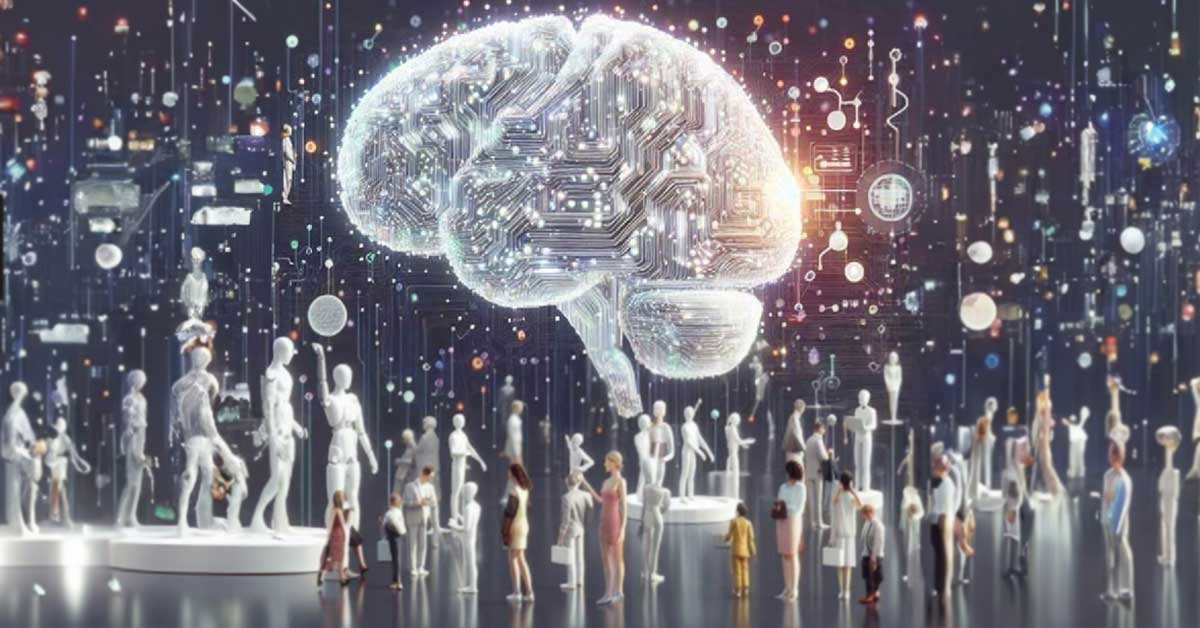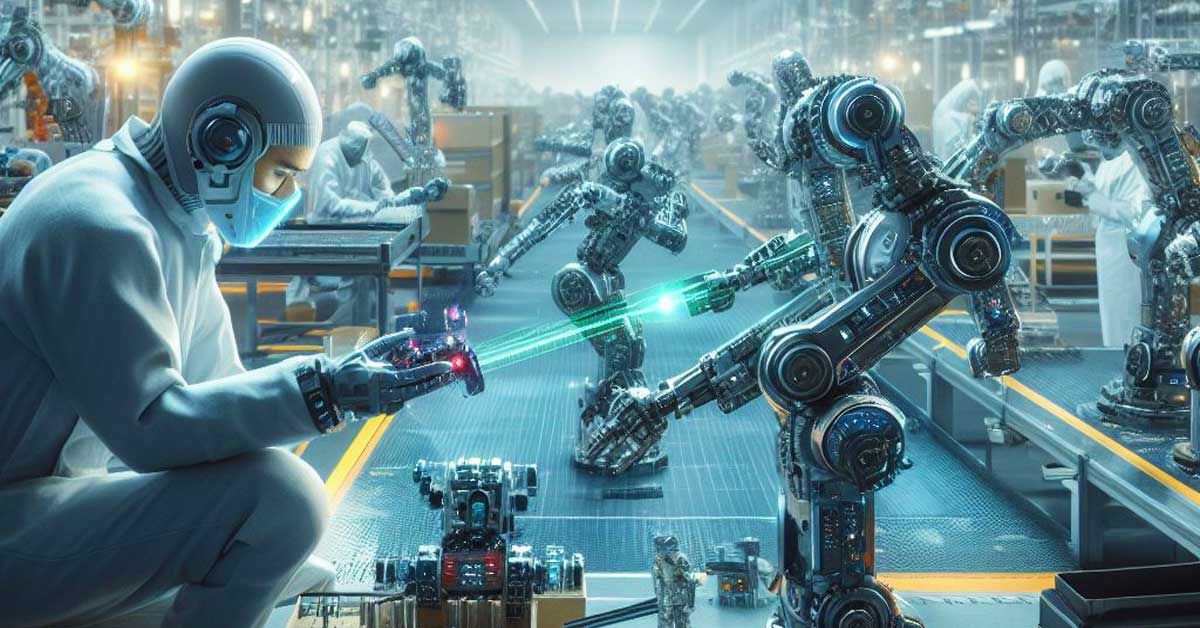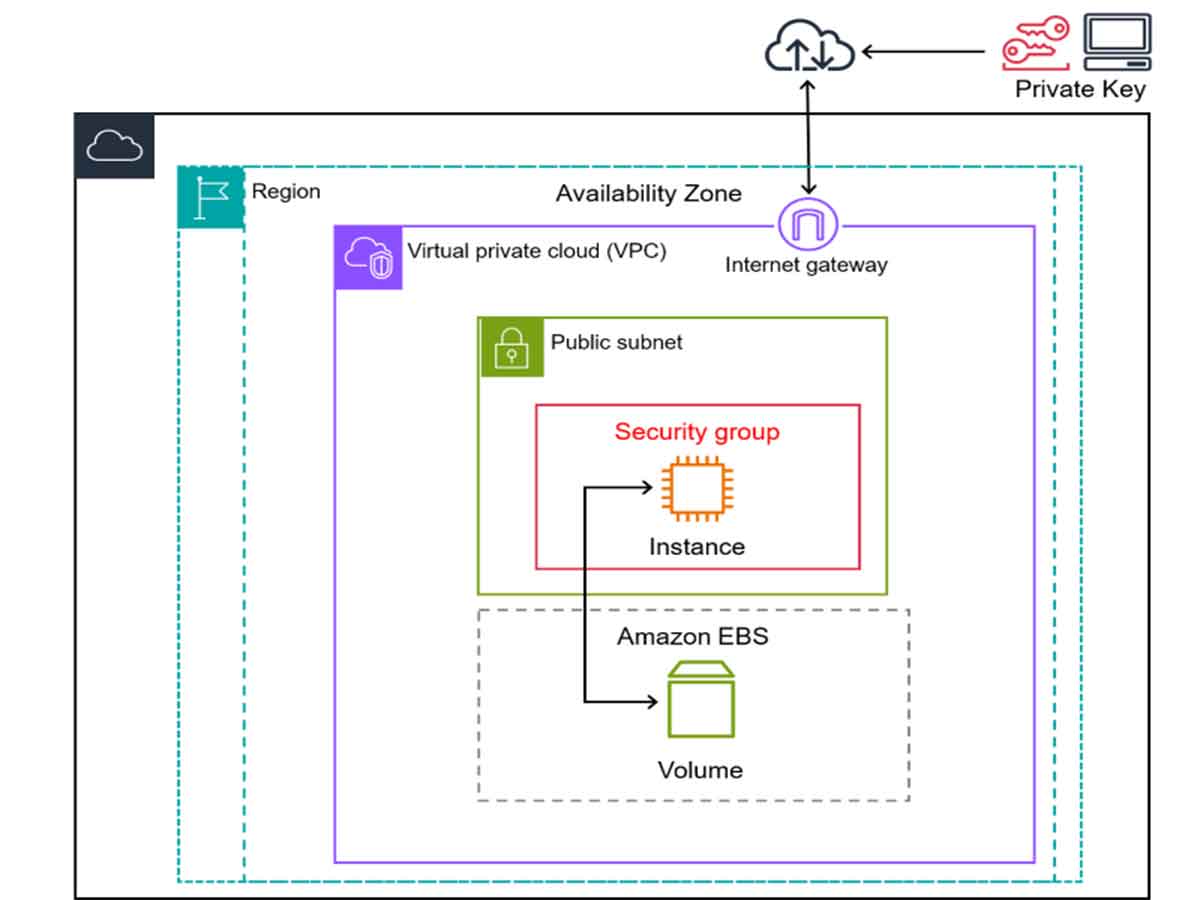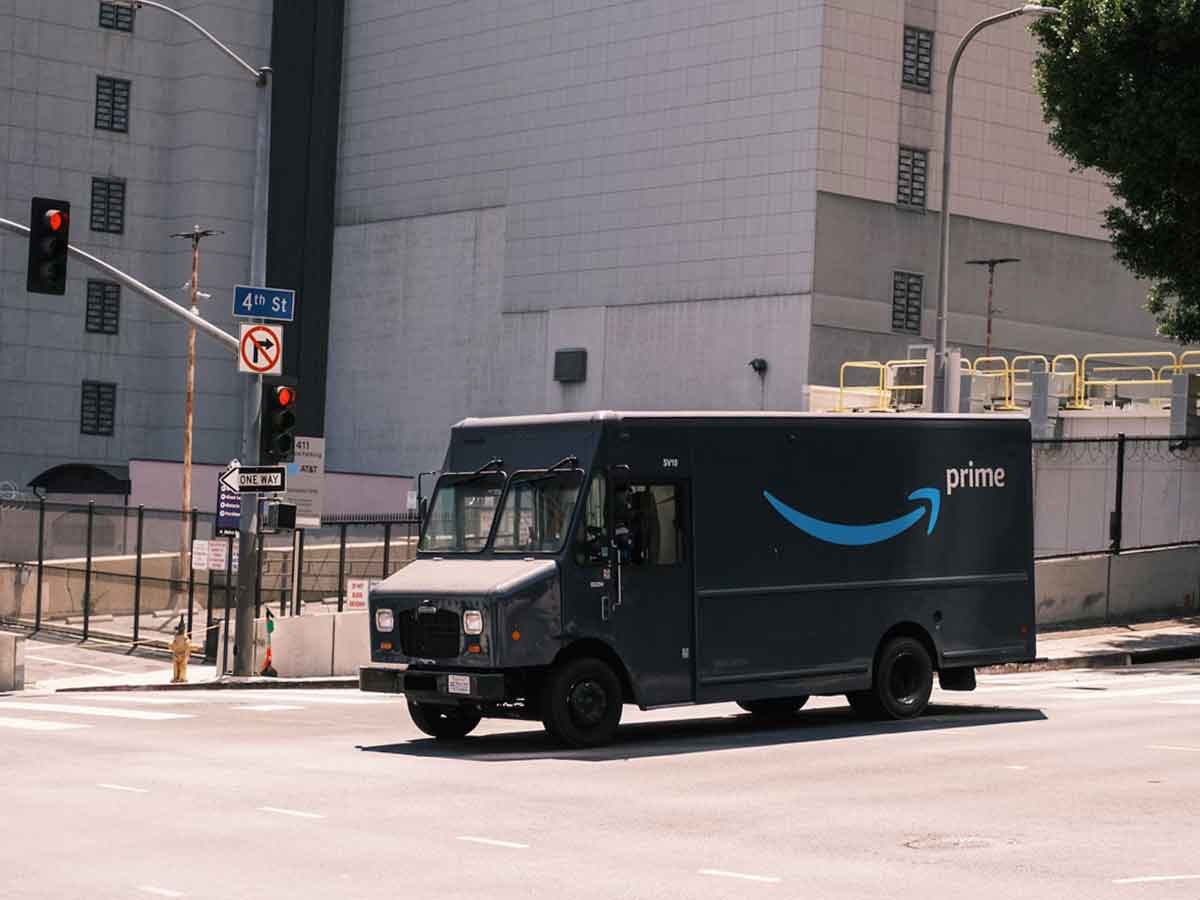Have you ever wondered how Amazon transformed from an online bookstore to a $1.5 trillion tech giant? It's more than just selling things online. It's mostly due to Amazon AI powerd algorithms, a set of artificial intelligence (AI) services that make things happen, especially for Amazon Web Services (AWS) customers.
A staggering 24% annual growth for the past decade is just the beginning. Future projections hint at a robust 16% annual growth by 2024. In 2020 alone, market capitalization skyrocketed by over $600 billion, pushing Amazon's value beyond the $1.5 trillion mark.
Amazon didn't just suddenly have AI superpowers; it had a strategy. They call it the Flywheel strategy, which involves many machine learning (ML) and deep learning technologies. That's the arsenal Amazon used to spread innovation across the company. AI is everywhere, from fancy things like chatbots to practical stuff like fraud detection in online shopping.

Amazon's AI services cover everything from recognizing pictures (that's computer vision) to making sense of tons of data (automated data extraction and analysis). They've got tools like Amazon Rekognition for image analysis and Amazon Lex for building conversational interfaces into any application. There is much more to talk about Amazon and how they use AI, so buckle up and let me break it down for you.
Inside the Amazon AI Brain
So, what is this Amazon Flywheel strategy? Amazon's Flywheel strategy, also known as the Amazon Virtuous Cycle, is a business model Amazon CEO Jeff Bezos himself created that focuses on customer satisfaction, loyalty, and long-term growth.
The Flywheel strategy leverages customer experience to generate traffic to the platform or third-party sellers. The strategy involves low prices, fast shipping, and a wide selection of products.

Amazon's AI in Action
So, where does AI play? Everywhere. It's the familiar voice of Alexa AI Assistant answering your quirky questions. It's ensuring your online shopping is fraud-free. And it's the wizard behind the curtain at Amazon warehouses, orchestrating the dance of packages and logistics.
Amazon AI services categorize computer vision, automated data extraction, language AI, customer experience, accelerate business metrics, code and DevOps, industrial AI, and even healthcare. And the tools? Well, amazon has basically an arsenal of tools like Amazon Rekognition, AWS Panorama, Amazon Comprehend, and many more.
But wait, there's more. When we talk AI and ML, we have to mention Amazon SageMaker; It's a High-performance, low-cost ML at scale. Amazon invests in AI, I mean literary and figuratively, Microsoft, Alphabet, C3 AI, and even cozying up with Hugging Face.
Amazon isn't confined to just one arena. It's not just an e-commerce giant; it's a film and TV producer, a cloud computing maven, a fashion icon, a wind-farm backer, and the list goes on. It's not just about doing one thing right; it's about conquering every frontier. ; Amazon aims to be the central provider for AI-as-a-service, competing with tech heavyweights like Microsoft, Google, Apple, and others.
Amazon's AI Mindset: Where Tech Meets Tenacity
Now, let's step into Amazon's bustling fulfillment centers. Have you ever wondered how that package arrives pristine at your doorstep? Enter Mohammed Khan, an unsung hero at an Amazon fulfillment center. A decade in, Khan's seen it all – from sorting to packing thousands of parcels daily.
Have you ever received a damaged product from Amazon? It's rare, right? That's because AI plays referee before shipping. Fulfillment centers conduct a meticulous six-point visual check, ensuring damaged items are rare in Amazon's vast inventory. We have to go to Berlin, Germany – Amazon's innovation hub.
How Amazon AI Detecting Damage with Precision

Amazon has an AI-driven damage detection system, which is basically an algorithm and colossal datasets. This process happens because of Machine learning models armed with reference images. This AI learns from millions of example images, creating a cognitive image of a pristine item.
The AI-driven damage detection system compares a specific item ('the query') with a known good item ('the gallery'). This system is as good as humans; it's three times better at spotting damaged goods. Imagine the impact – fewer flawed items slipping through the cracks.
For AI, it's about expanding the mental model. The more it knows, the better it becomes at identifying defects. The encore? Amazon plans to spread this AI symphony to a dozen North American and European operations.

Amazon envisions a future where this system, refined to perfection, scans over 40 million customer products monthly through Amazon's fulfillment centers.
Amazon's Human-AI Collaboration, Impact, and Empowerment
In Amazon's operations, they are part of a collaborative outfit that includes the invaluable expertise of human operations employees. Immediate feedback from these humans provides real-world insights that fine-tune AI decision-making with the help of Amazon AI; they streamline operations, manage costs, and enhance delivery times.
Amazon introduced a generative artificial intelligence (generative AI) tool for sellers of product listings. Generative AI steps into various tasks, from building spreadsheets to captioning images, making sellers' lives simpler and more efficient. These new generative AI capabilities simplify the listing process.


Amazons Large Language Models (LLMs)
When it comes to large language models (LLMs), Amazon has a lot of models. We can say an arsenal of them. These machine learning models aren't just limited to recognizing and summarizing; they're trained on large datasets to generate comprehensive product descriptions.
With generative AI powered by these LLMs, you only need to provide a brief description, and Amazon does the heavy lifting. The benefits are twofold: high-quality listings created with minimal effort. That’s one use case of Artificial Intelligences in general.

Traditionally, machine learning and deep learning were the tools of the trade for product information extraction. Now, with generative AI models, the game has evolved. Robert Tekiela, Vice President of Amazon Selection and Catalog Systems, sheds light on the improvements brought by these advanced models, emphasizing scale, quality, performance, and efficiency.
Plus, these AI models have inference capabilities. Picture AI inferring product knowledge at an unprecedented scale, recognizing specifications from diverse sources. There are other services use this technology as well, Like Amazon Textract.
Amazon Textract is a machine learning (ML) service that automatically extracts text, handwriting, and data from scanned documents. It goes beyond simple optical character recognition (OCR) to identify, understand, and extract data from forms and tables.
Artificial Intelligence and Machine Learning - AWS
In today's ever-evolving digital economy, adopting Artificial Intelligence (AI) and Machine Learning (ML) technologies has become crucial for accelerate businesses aiming to stay competitive. As companies strive to harness the power of AI and ML, the demand for cloud expertise is skyrocketing.
Accenture highlights the use case for organizations to build talent in technical areas like AI engineering and enterprise architecture while integrating AI into their processes.

However, a challenge looms in the form of a shortage of skilled workers in the cloud computing industry, leading to increased costs and delays in project implementation. Companies are investing in comprehensive training and development programs for existing employees to tackle this.
When we talke about cloud computing there Amazon ec2. Amazon Elastic Compute Cloud is a part of Amazon.com's cloud-computing platform, Amazon Web Services, that allows users to rent virtual computers on which to run their own computer applications.

Amazon Web Services (AWS) has been at the forefront of this AI and ML revolution for over two decades, providing many ML services that power innovations from Alexa to the intricacies of Amazon Fulfillment Center Logistics.
Companies like AstraZeneca leverage AWS services like Amazon SageMaker to streamline data analysis and ML model deployment, enhancing efficiency. T-Mobile utilizes AWS ML to extract meaning from customer support interactions, improving customer service, while the NFL enhances data collection, analysis, and usage with AWS ML.
Every job will be impacted by AI. Most of that will be more augmentation rather than replacing workers." - Pieter den Hamer, Vice president of Research, Gartner
As the impact of AI and ML on workforces unfolds, the World Economic Forum predicts a substantial increase in jobs, with a 40% jump in AI and ML specialists expected by 2027, adding a combined 2.6 million jobs.
Integrating AI and ML workloads requires a diverse and skilled team of professionals, including data scientists, machine learning engineers, software engineers, cloud computing specialists, cloud security engineers, and project managers.

This multidisciplinary team is essential for successful AI and ML adoption, encompassing expertise in data analysis, software engineering, cloud computing, security, privacy, and project management.
As part of its commitment to supporting organizations on their AI and ML journey, AWS introduces innovative services like Amazon Bedrock for generative AI-based applications and Amazon CodeWhisperer, offering real-time code suggestions an amazon transcribe, Companies are focusing on workforce-skilling initiatives to address the growing demand for skilled professionals.
For instance, ENGIE, a multinational utility company, partnered with AWS Training and Certification to equip its decentralized team of 4,000 IT professionals with cloud skills. The result? Engineers at ENGIE embraced advanced functionalities like machine learning for predictive maintenance models.
Similarly, Volkswagen's investment in cloud knowledge and skills led to reduced time to market and improved cross-team collaboration. AWS offers resources like the AWS Skill Builder platform, providing over 80 courses and learning resources on AI and ML.

The platform empowers learners and decision-makers to deepen their knowledge and skills in generative AI, contributing to continuous development, innovation, and growth for businesses.
Business leaders and decision-makers can explore the Generative AI for Executives Video Series to gain high-level insights into how generative AI can address business challenges and drive growth. The time is now to invest in workforce upskilling and reskilling, maximizing opportunities for businesses to thrive in the era of AI and ML.













